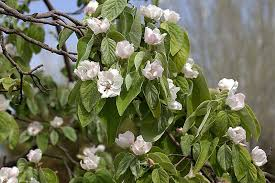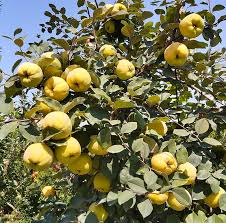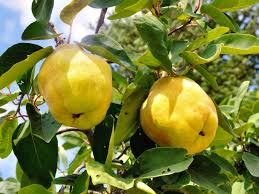Fashions in fruit-growing may shift, but one fruit tree that is making a much-deserved comeback is the quince. Named the 2014 Fruit Tree of the Year by the California Rare Fruit Growers Association, this tree offers more than just an interesting appearance; it also carries historical and mythological significance. A quince tree is a striking addition to any garden, and with its unique qualities, it deserves a place in modern landscapes.
A Quince Tree’s Character
The quince tree is full of character. It tends to grow in a twisted, irregular shape with thick branches. In June, large, pinkish-white flowers bloom, setting the stage for the golden-yellow fruit that ripens in the fall. The leaves of the quince are large, with a distinctive grey, furry underside that invites a gentle touch. This beautiful fruit is packed with flavor and history.
In ancient Greek mythology, some believe the golden fruit awarded to Aphrodite by Paris was a quince, not an apple, and that the fruit with which Eve was tempted in the Garden of Eden was also a quince. Historically, quince seeds were used as a gelling agent in jams, a role replaced by commercial gelatin today. The quince tree can live for many years, with some venerable specimens located at the Cloisters Museum in New York.

Aromatic and Flavorful Fruit
While quinces are too hard to eat raw (with the exception of the early-ripening ‘Ivan’ variety in good summers), they are prized for their rich, fragrant flavor when cooked. Stewing quince in a pan for just 15 minutes brings out its slightly spicy, aromatic taste. The fruit has a pineapple-like fragrance, though it’s closer to the scent of pineapple-flavored candy than fresh fruit. A bowl of quinces can fill a room with their delightful fragrance, and some even use them as natural air fresheners in cars.
How to Grow Quince Trees
Quince trees are relatively easy to grow, and they tolerate most soils—whether acidic or alkaline. They thrive in deep, rich loamy soil that retains moisture but drains well. If you have a pond or stream, planting a quince nearby could be ideal, as long as the tree doesn’t become waterlogged. For drier soils, make sure to amend the soil with compost and apply a thick layer of organic mulch to retain moisture. In hot, dry summers, a thorough watering will keep the tree healthy.
Quince trees are versatile in size. In open ground, they can reach heights of 10 to 20 feet (3 to 6 meters), so they may not be the best choice for small gardens. However, a quince can also be trained to grow along a wall or fence, and recently developed patio varieties allow even those with limited space to grow one. The trees are self-fertile, meaning that only one tree is required for fruit production.

Quinces prefer sunny spots, but in colder regions, growing them against a south- or west-facing wall can help protect them from frost. The trees are hardy in USDA Zones 5-9, though varieties like the east-facing ‘Vranja’ may tolerate some shade. Once established, quince trees require minimal pruning. Remove dead, diseased, or damaged stems in winter, and if the tree has an untidy growth habit, thin out any overcrowded branches.
Best Quince Varieties
Quinces come in both apple- and pear-shaped varieties. The pear-shaped varieties, such as ‘Leskovic,’ are striking in appearance, while the apple-shaped ‘Leskovic’ is among the hardiest and best for colder climates. Other popular varieties include ‘Vranja,’ which has received the Award of Garden Merit, and ‘Meech’s Prolific,’ known for its reliable performance. If you’re unsure which variety is best for your area, consulting a local nursery can help guide your choice.
Harvesting and Storing Quinces
Quinces ripen gradually to a rich yellow color. To fully develop their unique flavor and aroma, it is best to leave the fruit on the tree until the end of October. However, if frost is approaching, it’s advisable to harvest them early. Once harvested, quinces should be stored separately from other fruits as their strong fragrance can affect nearby produce. Keep them in a cool, dry place and check them regularly for any signs of rot. Quinces will keep for up to three months.
Using Quinces in the Kitchen
Quinces are versatile in cooking and can be used in both savory and sweet dishes. They pair wonderfully with meats or can be used to make jams, jellies, and even a unique apple pie. The addition of quince adds a depth of flavor that will make you want to include it in all your apple-based recipes.
A Word of Caution
It’s important to note that the quince referred to in this article (Cydonia oblonga) is different from the Japanese quince (Chaenomeles), also known as Cydonia japonica. While both produce edible fruits, the Japanese quince is typically grown as an ornamental shrub, not a tree.
In conclusion, whether you’re growing it for its history, fragrance, or flavor, the quince tree is an excellent choice for the modern garden. Its versatility, beauty, and unique culinary potential make it a must-have for gardeners and cooks alike.
